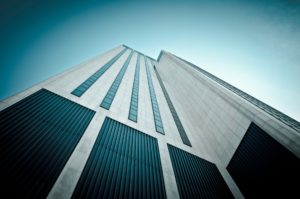Cladding
Government bans combustible cladding
Ministers have laid new regulations in Parliament today (29 November) to ban combustible cladding on new tower blocks.

 The ban means combustible materials will not be allowed on the external walls of new buildings over 18-metres containing flats, as well as new hospitals, residential care premises, dormitories in boarding schools and student accommodation over 18-metres tall.
The ban means combustible materials will not be allowed on the external walls of new buildings over 18-metres containing flats, as well as new hospitals, residential care premises, dormitories in boarding schools and student accommodation over 18-metres tall.
Schools over 18 metres which are built as part of the government’s centrally delivered build programmes will also not use combustible materials, in line with the terms of the ban, in the external wall.
In addition, housing secretary James Brokenshire said he will take action to speed up the replacement of unsafe cladding, like the type used on Grenfell Tower.
“Everyone has a right to feel safe in their homes and I have repeatedly made clear that building owners and developers must replace dangerous ACM cladding. And the costs must not be passed on to leaseholders,” said Mr Brokenshire.
“My message is clear – private building owners must pay for this work now or they should expect to pay more later.”
The plans were originally announced by Mr Brokenshire at the Conservative party conference in October.
The ban comes as the Fire Protection Association calls on the Government to consider the role that toxicity should play in product approvals.
The Association has today launched a report detailing initial research that could assist the government’s decision on the future use of combustible materials in the construction of buildings, which is due imminently.
The report investigated the effects of toxic fumes generated by certain cladding combinations in designs still permitted by building regulations – and the effect this has on the people occupying buildings when fire breaks out.
“Measuring smoke toxicity in building products is currently not a legal requirement,” said Technical Director, Dr Jim Glockling.
“The results of our study show that current regulations may not adequately protect occupants from the potentially toxic fire gases from materials burning on the outside of buildings. Some current common cladding material combinations were shown to present less of a threat than others. There is certainly a need for further study.”
[vc_row][vc_column width="2/3"][vc_column_text]
Fire Safety in 2023 eBook
SHP's sister site, IFSEC Insider has released its annual Fire Safety Report for 2023, keeping you up to date with the biggest news and prosecution stories from around the industry.Chapters include important updates such as the Fire Safety (England) Regulations 2022 and an overview of the new British Standard for the digital management of fire safety information.Plus, explore the growing risks of lithium-ion battery fires and hear from experts in disability evacuation and social housing.[/vc_column_text][vc_empty_space][vc_btn title="Click here for more information and to view this Fire Safety eBook" color="danger" link="url:https%3A%2F%2Fwww.ifsecglobal.com%2Fresources-1%2Ffire-safety-report-2023-is-industry-ready-to-embrace-safety-culture%2F|target:_blank"][/vc_column][vc_column width="1/3"][vc_empty_space][vc_single_image image="88417"][/vc_column][/vc_row]
Government bans combustible cladding
Combustible materials will not be allowed on the external walls of new buildings over 18-metres containing flats, hospitals, residential care premises, dormitories in boarding schools and student accommodation.
Jamie Hailstone
SHP - Health and Safety News, Legislation, PPE, CPD and Resources Related Topics
New cladding fire risk identified and could be “tip of iceberg”
Who pays for fire safety remedies in residential blocks? Examining the cases so far
Leaseholders obtain first remediation order under Building Safety Act for defective cladding
